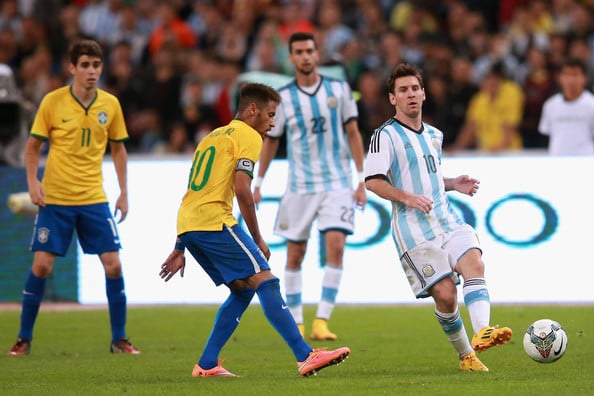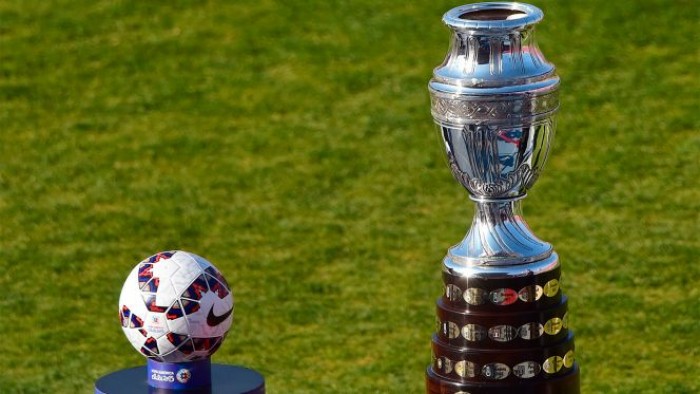As we approach the draw of the centenary edition of the oldest international soccer tournament in the world happening in New York City, we take a look at what questions might be answered prior to the groups being made.
A special and unusual Copa America
For the first time since the years 1956 and 1957, the Copa America will be played in consecutive years, and for the first time the tournament will be held in a non-CONMEBOL nation. Obviously, this makes it special and a bit unusual to celebrate the centenary edition of the tournament in North America.
It’s had an uneven history. Played biannually since 1987 and then every three years during 2001 and 2004, it has always been a tournament that has interfered with World Cup qualifiers for the five FIFA World Cups before it was shifted to every four years in 2007 with the tournament in Venezuela. In the midst of that period, the marathon format of World Cup qualifiers, with all 10 nations playing each other home and away, was introduced, making it seem that there would be some interference with the qualifiers and the Copa America. In those times, below strength and experimental sides came to the tournaments as the main strong sides became focused on qualifying for the World Cup.
This will be the first time that the Copa America will also have four more teams, bringing the number up to 16 sides. It will have four groups of four teams, meaning the winners and runners-up of each group will advance to the quarterfinals, where the knockout stage will start.
Who will actually come?
It’s understandable that this is quite doubly the biggest tournament in the United States for men’s soccer since the 1994 FIFA World Cup, with all the nations from South America as well as six from North America. While Major League Soccer did not debut until two years after the conclusion of the World Cup at the Rose Bowl. 22 years later, this nation is now much more passionate and of course, more fanatic with the rising popularity of the sport and immigration of said countries participating in the nation.
However, the real question will be who from South America will come. The biggest names in Lionel Messi, Neymar, Luis Suarez, James Rodriguez, and Alexis Sanchez, among others who play their club soccer in a brutal European season will most likely be making the trip. However, before they complete their club season, they will have to deal with rounds five and six of qualification for the 2018 FIFA World Cup in Russia, in the most competitive World Cup qualifying process in the world.
Surely, pressure from the fans and under pressure from their European clubs to not come to the United States will determine everything. All 10 South American nations were in action in last year's Copa while six took part in Brazil 2014. A third consecutive year without a full holiday looks hugely fatiguing for the body.

Pressure on the big nations
Argentina haven’t won the Copa America since 1993. 23 years have passed in which they've reached a FIFA World Cup final in 2014 and three Copa America finals in 2004, 2007 and 2015 but have always come away empty handed. This generation of superstars has been left without a major international title, something Lionel Messi would love to add to his trophy haul during his successful career. Is this the tournament where they can finally seize the day?
Brazil on the other hand are also under pressure to perform well and regain their identity, especially after the humiliating performance in their backyard in the World Cup two years ago and the quarterfinal exit last summer in Chile. Neymar, the 24-year-old captain and third place finalist in the Ballon D’Or last month in Zurich, will want to win this tournament but also have eyes on another title that they have never won: the Olympic gold medal for the games in Rio de Janeiro, which he is set to be apart of. Will he play both tournaments? If he does, what will Barcelona have to say about this?
Chile, the defending champions of the Copa America, and CONMEBOL's representatives at the Confederations Cup in Russia next year, have undergone major changes over the course of eight months. Jorge Sampaoli left after disputes with the Chilean FA and in came Juan Antonio Pizzi. Can the Argentine-Spaniard manager provide enough influence to an ending generation of the best set of Chilean soccer players in history and build momentum right after the two World Cup qualifiers?
The hosts
Jurgen Klinsmann is under tremendous pressure to regain his teams standing as CONCACAF’s best nation. After last year's disastrous fourth place finish at the Gold Cup was followed by October's CONCACAF Cup defeat to Mexico, the USMNT need to have a better year. Among them, Costa Rica, Jamaica, Panama and Haiti will be CONCACAF's representatives, with one of them looking to be in the United States’ group.
A tough draw could be in the cards for the Yanks, especially if they get one of the big nations in Pot 2 between Uruguay, Colombia, Chile and Ecuador. Victory in the tournament could possibly ensure them being back on top and would mean big things for US Soccer, but with World Cup qualifiers happening in between and all the pressure of underperforming against fierce North and South America opposition, things will be difficult for the Americans. There are more worst case scenarios for their group than best case scenarios.
Everything else and even more questions that will asked and answered will be followed with the 16 participants will be drawn into four groups of four teams at New York City’s Hammerstein Ballroom on Sunday (8 p.m. ET; Fox Sports 2, Univision Deportes) to celebrate 100 years of the oldest tournament in the world.






































